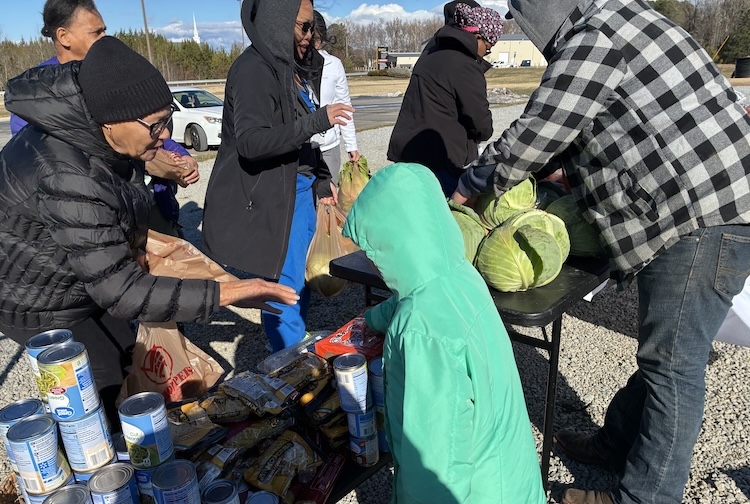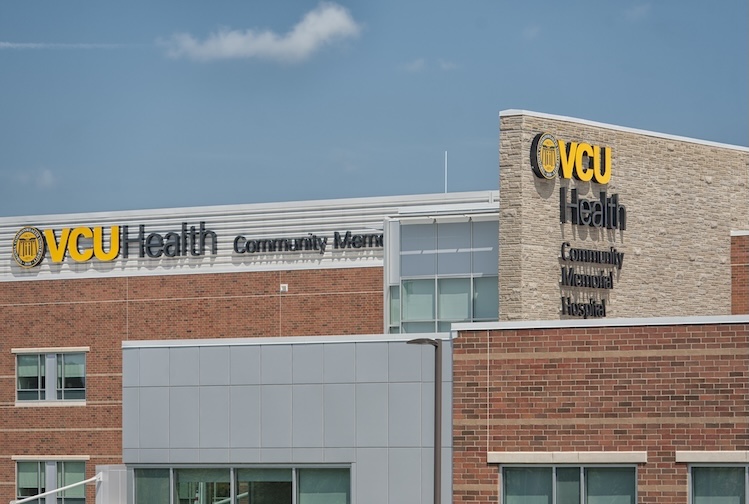Pursuing social justice through a career in science
As part of Global Diversity Awareness Month, Dr. Katherine Y. Tossas shares her unique perspectives.
October 23, 2020 Dr. Katherine Y. Tossas with her children
Dr. Katherine Y. Tossas with her children
As part of Global Diversity Awareness Month, we're amplifying the voices of VCU Health team members with diverse perspectives and experiences who are helping others in their communities. Here, Katherine Y. Tossas, Ph.D., director of catchment area data alignment in the Office of Health Equity and Disparities Research at VCU Massey Cancer Center, describes her life experiences.
Why did you choose your profession?
I came to academia in quite a roundabout way. It was not my first, second or third choice — not because I was not interested but because during my training, implicit and explicit messaging made me feel inadequate. Also, as the first person to attend college in my family, I had to prioritize having a secure job rather than securing degrees.
Academia became an opportunity for me later in life, after having worked in pharma, local, state and national non-profits, and multiple other positions. (I worked full time through my Ph.D., which I did later in life as a second career choice after realizing that I was far from my original purpose: to be a change agent, social justice catalyst and a champion for health equity.)
Through the process, I have worked as a waitress, cashier, lab technician, modern and salsa dancer, hall monitor, babysitter, housekeeper, yard worker, property manager, Avon rep, retail marketer, triathlon trainer, health educator, TA, RA and GA, to name a few.
I became an epidemiologist because I am a scientist at heart, and epidemiology is the basic science of public health. Epidemiology gave me the tools to tangibly and undeniably document and hopefully dismantle social and health inequities. I chose cancer epidemiology because cancer is one of the few illnesses that affects us all (albeit differentially): The young, old, rich, poor, conservative, liberal. Therefore, cancer can evoke a broad unity that other diseases may not.
Did you face any challenges or misconceptions on your journey to get where you are?
Ha! A few. Sometimes as a young (ish) female, racial/ethnic minority, non-native English speaker with an accent, a mother, etc., you get the feeling of “can I just catch a bit of a break?! Can it ever just be simple?!” And you just remember that the impossible just takes a little longer.
Like Abigail Adams said, “It's not in the still calm of life that great characters are formed; the habits of a vigorous mind are formed in the contending with difficulties.” So, I'm okay with challenges, but I'll share some misconceptions because, while challenges build strength and character, misconceptions can hit you unexpectedly, in the pit of your stomach and, in my opinion, take a different level of resilience.
- I've been asked if I know how to use a photocopier while working as a bioremediation scientist at one of the Department of Energy National Laboratories.
- I've been reported for potential security breach because I was speaking in Spanish (my native tongue) to a Latina colleague in the same national lab.
- I've been mistaken as the administrative assistant and asked to serve coffee and make some photocopies by one of the White, male members of my own board of directors in Pharma during my own Rest of World Diagnostic Product Launch meeting. I politely served the coffee, made the photocopies and then proceeded to stand up to introduce myself as the senior product manager and meeting leader.
To this day, I am still often mistaken as my male colleagues' admin or grad student or subordinate — much to my colleague's discomfort and often despite their introduction of me as “Dr. Tossas.”
These are often some of the reasons why some female professionals may feel the need to adopt some maladaptive traits from the “command and control” leadership style most common in male leaders, rather than the potentially more effective innovative leadership or servant leadership approaches, with the acknowledgement that it is documented that often our society chooses to interprets a woman's assertion as aggression, and aggression as assertion in males — another misconception.
What would you say is the most rewarding part of your job?
That I get to fulfill my purpose: to be a change agent, social justice catalyst and a champion for health equity. That I can think, create and solve with some of the smartest and most committed people in the world and still be humbled at the realization that “smart” is not enough; that each challenge is different and unique, so there's no boredom. There's always a new mystery, a new challenge, and when we rise to the occasion, not only can we actually effect and measure the positive change, but also perhaps contribute to saving lives in the short, mid and long term.
Finally, I truly value being in this space as an example, so that others that look like me and come from the neighborhoods similar to the one I came from can realize that they belong here, too. We simply belong and should be represented accordingly, across all spectrums of leadership and success.
Why do you think it's important for there to be diversity in health care?
Beyond being good for business, employee satisfaction, engagement, and security, I think diversity matters in health care because it drives innovation. It elevates and pushes our creativity and thinking. We are all familiar with Einstein's famous definition of insanity to “do the same thing over and over again and expect a different result.” In parallel, I pose that lack of diversity in health care is like discussing/developing/creating with the same tools/people/thinking frameworks over and over and expecting different/new results/products/processes.
In fact, Audre Lorde's “the master's tools will never dismantle the master's house” can also be used as an analogy for why diversity matters in health care. If we look beneath the surface of her intentions (that using capitalism or consumerism to dismantle the problems from such is ineffective), I believe her point was more about the need to embrace our differences (rather than tolerate them) because doing so creates a “fund of necessary polarities between which our creativity can spark like a dialectic.”
We bring the distinct collective experiences from our neighborhoods, families, cultures, upbringing and environments. These provide a unique and irreplaceable perspective that only we can bring.
While there are plenty of people that are better scholars, epidemiologists and methodologists than I am, there is not another female, Puerto Rican from Ponce, only child, from a low socioeconomic status, product of public schools, daughter of a three-time cancer survivor and a farmer/fisherman/welder, with one degree of separation from drugs, violence, incarceration and HIV, but also one degree of separation from Nobel Prize winners, inventors, Broadway superstars and all kinds of scholars.
I (we/each of us) bring our entire selves to the creative process. This makes for better discoveries, better processes. In summary, as in evolution, diversity enables species to survive and thrive despite changes in the environment.
Do you have any advice for patients who may be struggling with the tragedies happening in the world right now, and/or discrimination or injustices they may face each day in their own lives?
Oh gosh. Advice is too strong, but perhaps my words would be that despite your belief to the contrary, you are NOT alone. That while we are unique in our experiences, we are NOT unique in our experience of pain.
It doesn't matter whether you're experiencing grief from losing a child, parent, spouse, your job or losing yourself! Whether you're presently being or previously have been discriminated against, others have gone through this pain (like a common membership to the least desired club), and that somehow, though you may not think so at the moment, though you may not know how, you WILL overcome this.
During some of my darkest hours, when I've experienced deep loss (from losing a parent and a child), I've felt offended by the defiant rise of the sun and also somewhat resigned that while there's life, there's hope. I will also share a few verses from poet Oriah Mountain Dreamer to say that ultimately what you and those around you are interested in is to “know if you can get up after the night of grief and despair weary and bruised to the bone and do what needs to be done to feed the children.”
Pain, anger, outrage can be valuable fuels when put to good use. They are otherwise as a good mentor of mine says “uncoupled mitochondrial reactions” that generate a lot of heat with no consequence. Use your fuel purposefully.
In what ways do you support your community?
I support my community through my work and actions via direct and indirect community service, by, say volunteering to cook and serve meals with my children during Thanksgiving, by donating to community organizations I care about, by eliciting and supporting community dialog that leads to actions, by mentoring, recruiting and training others that look like me, by holding the door open so the community can be at the table, by holding myself and my colleagues accountable in our work, ensuring that I ask the unpopular questions (how would this benefit this community today? How many people from this community will be hired in your project? Why did you choose to include x or y criteria, which may make it difficult for a particular population to access/participate/be heard, etc.).
A very important picture I like to show during ALL of my public presentations is one I took during one of my jobs. It shows a live manhole in a mammography facility in the south side of Chicago, which serves a predominantly Black and poor population. It would drastically change my views as an epidemiologist forever as a reminder that data does not tell the whole story.
I was there to evaluate their poor mammography quality, but no one would've prepared me to see a manhole inside the X-ray processing room. Somehow this was deemed acceptable, and in my evaluation/modeling of their data, there is no way I can reflect or “mathematically adjust” for the fact that these mammography technologists have to work under these conditions. May I never forget.




